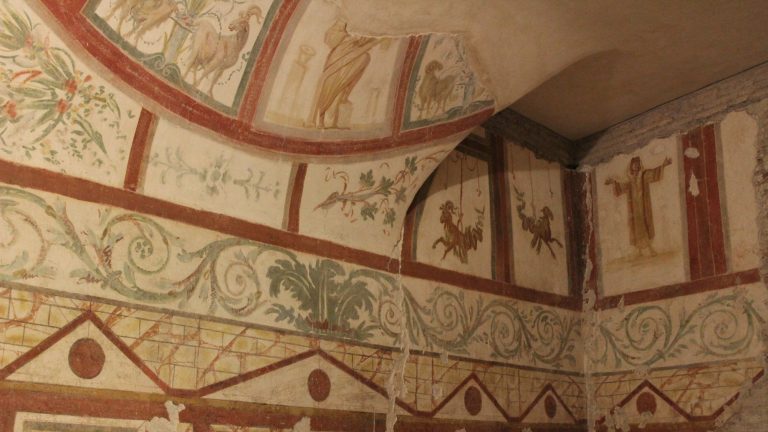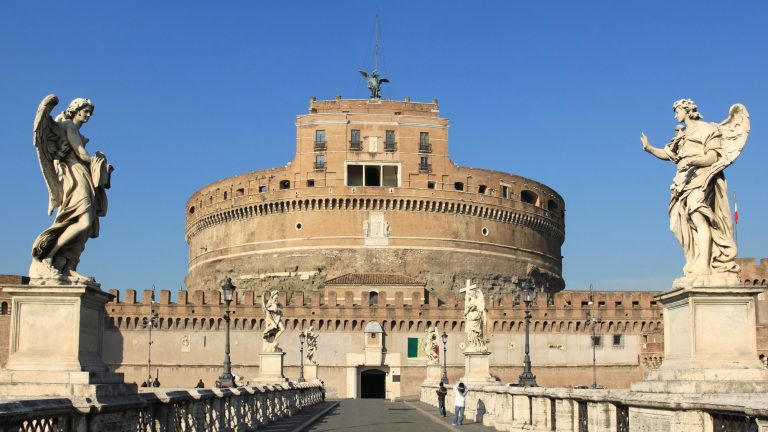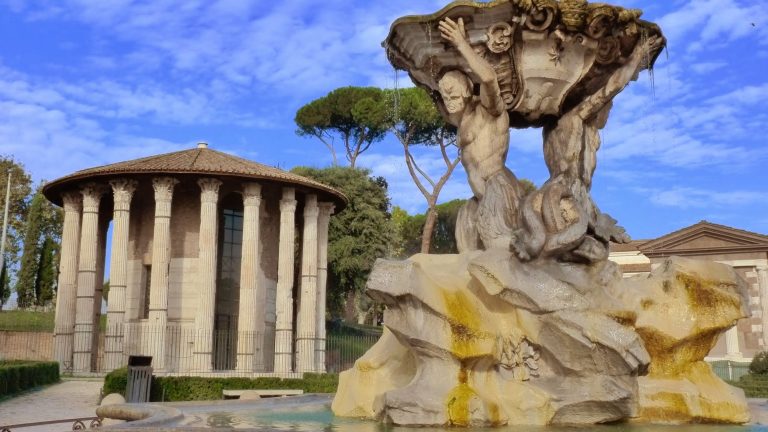Rome & the Vatican
A - Z of Art, History & Archaeology Sites & Museums
On this page you will find all the art, archaeology and history sites and museums in Rome currently in our database, listed A to Z. We also have a number of thematic lists of sites and museums around Rome. This list in intended for people to explore a complete list of attractions and landmarks to visit in Rome when creating a personal itinerary. Scroll through and add which ever sites and museum interest you to your itinerary and travel lists. You can easily edit your itinerary when you see your choices mapped.

Rome City Guide

Italy Travel Guide

Rome Top 10
Create Your Rome Itinerary & Travel Lists
Are you planning a trip to Rome? You can use our itinerary builder with the list of sites and museums below to create your own travel lists (such as places you have been to, places you would like to visit) and itineraries. These can also be shared with your friends, privately and on social media. To make use of this feature, however, you will need to login or register as a new user. You also need to be logged in to see more than the basic features for each point of interest on the list below.
Archaeology & History Sites & Museums in Rome
Aqua Virgo
Aqua Virgo was one of the eleven aqueducts that supplied the ancient city of Rome. It was completed in 19 BC during the reign of Emperor Augustus. The aqueduct was built by Augustus’s son in law, the statesman and architect Marcus Agrippa, to supply water to the first public bath house in Rome, also built by Agrippa. During the Renaissance the aqueduct was restored to supply water to the Trevi Fountain and the fountains on Piazza del Popolo. The travertine arches that can be seen at this locale marks one of a few spots where remains of the Roman aqueduct can be seen.

Arch of Janus
This massive, four-way arch built of marble is 16 metres high and 12 metres square. The north-west pier has a staircase that would have led to a series of rooms and chambers at the top. The enigmatic structure is built over an ancient drain that ran down the valley to the Tiber River. And is thought to have been a boundary marker rather than a triumphal arch. Also, dating the arch has not been simple. Remains of terracotta storage jars were found to have been used in the concrete vault, which are typical of jars used in the 4th century AD.


Baths of Caracalla
Built under Emperor Caracalla between 211 and 216 AD, these baths were the second of larger Imperial bath houses in Rome. And the sheer size of the baths still captivates visitors today. The bathhouse covered an area of 100,000 metres square and accommodated about 10,000 people. More of a leisure centre than a series of baths, these were the second to have a public library. The baths continued to be used until the 6th century. Now a popular archaeological attraction, the ruins are the summer home of the Rome Opera Company.

Capitoline Museums
The Capitoline Museums have a long history, and are said to be the oldest public collection of archaeological artefacts in the World. They are certainly amongst the finest museums in Rome. The origins of the collections date back to 1471 when Pope Sixtus IV had 6 bronze Roman statues moved to the City Council on the Capitoline Hill. Now, many centuries later, there are over 1300 objects, most of which are from archaeological sites in Rome itself. The Capitoline Museums are in fact three different buildings, called palazzos, that surround the trapezoidal Piazza del Campidoglio

Capuchin Crypt
Rome’s Capuchin Crypt – officially the Museum and Crypt of the Capuchin Friars – is at once both shocking and fascinating. In a series of small interconnected chapels beneath the church of Santa Maria della Concezione dei Cappuccini are the bones and mummified remains of an estimated 4,000 friars who died between 1528 and 1870. Far from being a macabre spectacle, the Capuchin order believes the remains of former friars are a silent and poignant reminder of humanity’s mortality and the passage of life on Earth.


Case Romane del Celio
At the top of the Caelian Hill are the Case Romane del Celio, snapshots of early Roman history.Twenty rooms are preserved under a 4th century basilica, each with evidence for their former use over the years as homes, shops and even as a Christian shrine. Decorated with a unique mix of pagan and early Christian frescoes, these rooms give visitors a glimpse into ancient Roman homes and daily life, showing the changes that time and the rise of Christianity brought to the city.


Castel Sant'Angelo - Hadrian's Mausoleum
Castel Sant’Angelo is one of the most important historical sites in Rome. Now a museum, the structure was first built on an artificial mound on the northern banks of the Tiber River. It was built as a mausoleum for Emperor Hadrian and is wife Sabrina. In the early medieval period it was converted into a military fortress. Given its proximity to St Peter’s Basilica, in the 14th century it was converted into a residence for the Popes. The Vatican also used it as a prison. All of this history is on display to visitors , including the Papal chambers and their exquisite frescoes.


Circus Maximus
The site of the Circus Maximus is said to be the city’s oldest and largest public space. Evidence suggests it was founded sometime during the 6th century BC. By the end of the 1st century AD, it could accommodate an audience of over 250,000 people. Besides chariot races, other public spectacles including executions, gladiatorial contests and animal hunts were also staged here. The rounded, eastern end has recently been restored, and during summer months visitors cane experience the circus through an augmented reality experience.

Flaminio Obelisk
At the centre of Piazza del Popolo stands one of the first Egyptian obelisks brought to Rome by Augustus to mark the 20th anniversary of his conquest of Egypt in 10 BC. Made of Aswan granite, the obelisk was made for Seti I before 1300 BC, but only three sides bear his inscriptions. Ramses II had the fourth side inscribed. In Rome the Flaminio obelisk was erected at the eastern end of the spina at the Circus Maximus. During excavations in 1587 the obelisk was found and then moved to the Piazza del Popolo under instruction from Pope Sixtus V. The Egyptian style lions and basins were added in 1823 by the Italian architect Guiseppe Valadier.

Ludus Magnus
Adjacent to the Colosseum, and beneath street level, are the remains of the Ludus Magnus – what was the barracks and training arena for the gladiators that fought in the iconic Roman amphitheatre. The ruins were discovered in 1937 during building works, but only excavated at the end of the 1950s. The rest of the arena and what is thought to have been the armoury are still under the adjacent streets and buildings. The entire block has been left exposed and visitors can see just under half of the arena surrounded by barracks which housed the gladiators. When the Colosseum ceased to function this area was used for burials.

Marcellus Theatre
Within the ruins of the most important of Rome’s three theatres is a 16th century palazzo that is now subdivided into smaller apartments. The curving outer façade of the theatre is still obvious, as are other architectural features including the arcades. The theatre, which had a seating capacity of over 20,000 people, was started under Julius Caesar but finished for Augustus and inaugurated in either 13 or 11 BC. This theatre then became a model for further theatres built in Italy and the Western Roman Empire.

Mausoleum of Augustus
Augustus’s Mausoleum was one of the emperor’s first major building projects in Rome. Built in 28 BC, Augustus is said to have been inspired by the mausoleum of Alexander the Great in Alexandria, Egypt. Although this is the largest circular funerary monument in the world, it was left in a ruinous condition until restoration started in earnest in October 2016. Following extensive renovation, the site re-opened to the public on 1 March 2021 by the mayor of Rome. Since June 2022 it has been closed while the Piazza Augusto Imperatore is redeveloped.

Minerveo Obelisk
In a small piazza behind the Pantheon is the smallest obelisk in Rome – only 5.5 m high. This is one of a pair (the other is in Urbino, Italy) made for Hophra and erected at the Temple of Saïs in Lower Egypt during his reign (586 – 570 BC). There is very little information about how they got to Rome and where they were erected. It is possible this pair were placed at the entrance to Augustus’ mausoleum. They were discovered during excavations in 1665, in the remains of what was the Temple of Isis, but initially interpreted as a Greek temple of Minerva. The base was created by Bernini, and the obelisk re-erected in 1667.

Navona Obelisk
In front of the Baroque church of Sant’Agnese in Agone, on one of the most picturesque piazzas of Rome, stands the Navona Obelisk. Although it is made of Egyptian granite the obelisk was commissioned by Emperor Domitian and the hieroglyphs were carved by Roman stonecutters. Some of the images represent Domitian as a Pharoah, the only obelisk in Rome to depict an emperor as a pharaoh. Domitian has the obelisk erected at the
Temple of Isis and Serapis, it was then moved by Maxentius to a circus named for him. Although admired by Romans and visitors alike today for its position in a Bernini fountain, its re-erection in the piazza in 1648 was controversial because of the costs.

Pantheon
One of the most popular attractions in Rome, the Pantheon was completed by Emperor Hadrian in 125 AD. The impressive dome ceiling of the rotunda was until 1958 the largest concrete span in the World. The reason for its remarkable preservation after nearly two thousand years is because the Roman temple was converted into a church in 608 AD. As impressive as the building is, its function is unknown – although most assume that it was a temple of one kind or another.

Rotunda Obelisk
In front of the Pantheon is the 16th century Fontana del Pantheon. The centre-piece of the fountain is an obelisk, added in 1711. The obelisk was built for the Egyptian Pharaoh Ramses II and the Temple of Ra in Heliopolis. This is the first of two obelisks the Roman Emperor Domitian had brought to Rome to decorate his newly completed Iseum Campense, a shrine to the Egyptian god Isis that stood to the southeast of the Pantheon.


Round Temple - Temple of Hercules Victor
A Greek-style temple that was built towards the end of the second century BC and now set in a small park near the Tiber River. Although the roof, the marble entablature and upper third of the cella wall are not original, the Corinthian columns and two windows beside the door are. The marble used for the construction of the temple comes from the quarry on Mount Pentelicus in Athens. By the 12th century the temple had been converted in to a church, but de-consecrated at the start of the 19th century, when the ground level surrounding the temple was lowered to reveal the podium.

Sallustiano Obelisk
In the Piazza della Trinità dei Monti at the top of the Spanish Steps is an obelisk that was commissioned by a Roman emperor, possible Hadrian. Because the hieroglyphs are the same as those on the Flaminio Obelisk, and much poorer in workmanship, it is thought this is a 3rd century AD replica of that obelisk. The name comes from its first position in the Gardens of Sallust. The obelisk was almost certainly toppled by the Goths lead be Alaric when they entered Rome at the Salarian Gate in 410 AD. Before being erected in its current position in 1789, there was an attempt to take it to Paris to stand in front of the Notre Dame cathedral.

Temple of Portunus
Thought to have been dedicated to the Roman harbour-god Portunus, this remarkably well preserved temple owes its survival to having been turned into a church around 872 AD. In the 1930s, buildings surrounding the temple were demolished and all external traces of the church were removed. The temple was built between 80 and 70 BC. A a more modest replacement for an earlier, late fourth century temple that had been constructed on a six metre high podium to avoid flooding waters of the Tiber River.

The Colosseum
The Colosseum, also known as the Flavian Amphitheatre, is undoubtedly the iconic monument of Rome. At 48 m high, and 545 m in circumference, this was by far the largest amphitheatre in the Roman Empire, seating between 50,000 and 80,000 people. While the basic layout was used in towns and cities throughout the Empire, the size and attention to detail we see in Rome was never matched anywhere else. Following substantial restoration, the underground tunnels of the arena became fully open to the public in 2021.


Trajan's Column
Trajan’s Column was erected in Rome in 113 AD. A victory monument, the column commemorates Emperor Trajan’s victory in the Dacian Wars (102 – 103 and 105 – 106 AD). Originally a bronze statue of Trajan was placed on top, but since 1588 it has been a statue of St Peter, when the Column became the first official archaeological monument of Papal Rome. Today the Column is still admired as a feat of engineering and for the exquisitely detailed low relief frieze carved on the shaft.


Trevi Fountain
At an impressive height of 26 meters, this Baroque-style fountain designed by Nicola Salvi and completed in 1762 depicts Neptune, the god of the sea, surrounded by tritons and other mythical creatures. Legend has it that throwing a coin over your left shoulder into the fountain ensures a return to Rome. The fountain is at the end of an aqueduct that follows the course of the ancient aqueduct built in 19 BC. A few remnants of this Roman aqueduct can still be seen. One of these is the castellum aquae, discovered during the renovation of the Trevi Cinema. Visitors can see this and other underground remains including an imperial town house.

Vatican Museums
Founded in the early 16th century by Pope Julius II, the pubic museum of the Vatican City holds the vast collection of the Catholic Church. Of the estimated 70,000 only 20,000 are on public display. These include some of the most well known examples of Etruscan art, Roman sculpture and Renaissance masterpieces. One of the most well known sculptures is the Roman Laocoön and His Sons, the acquisition of which in 1506 is said to have been the origins of the Vatican Museums. The route through the museums include Michelangelo’s ceiling in the Sistine Chapel and the Raphael Rooms of the Apostolic Palace. The museum also has an important collection of Egyptian antiquities.

Vatican Obelisk
Of the 13 Egyptian obelisks brought to Rome, the Vatican Obelisk is the only ancient obelisk in Rome to have remained standing since Roman times. It was the largest non-inscribed obelisk to leave Egypt, at 25.5 m high and weighing an estimated 326 tonnes. It was Gaius Caligula who had the obelisk bought to Rome in 37 AD. The obelisk was originally erected in gardens Caligula had inherited from his mother, and then on the central spina of a circus, where it stood until 1585 when it was re-erected in its present position the centre of St Peter’s Square in the Vatican.

























